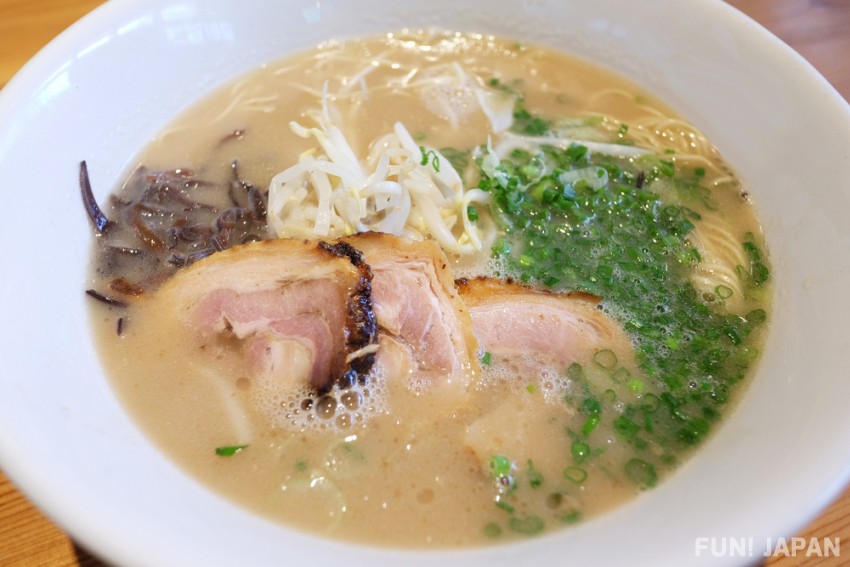Tonkotsu Ramen: Enjoy Ramen With Delicious Creamy Soup

Do you have Ramen restaurants in your country? Have you eaten Tonkotsu Ramen before? Today we’ll be thoroughly researching Tonkotsu Ramen!
The Broth and Soup of Tonkotsu Ramen
The one defining characteristic of the commonly known Tonkotsu Ramen in Japan is its cloudy and creamy white soup. The collagen in pork bone becomes gelatinous when heated up. When cooked at high temperatures, the gelatin, and fat from the pork bone combine, turning into a white soup. However, if the pork bone is slowly stewed at medium heat, it creates a golden bouillon soup.
The Noodles of Tonkotsu Ramen
Tonkotsu Ramen is often paired with Hakata Ramen, a thin and straight noodle cooked quickly to keep its chewy texture. On the other hand, in Kurume of Kitakyushu, this ramen is paired with a medium-thick noodle that is cooked to be soft. By having the noodles cooked softly, the flavor from the soup is absorbed more easily.
Eating Tonkotsu Ramen
When eating Tonkotsu Ramen, try tasting the soup first. You’ll experience the rich and unique taste of the pork bone broth. Once you’ve tasted the soup, eat the noodles with the other toppings of the ramen.
How to make Tonkotsu Ramen
The pork bone soup of Tonkotsu Ramen is made by stewing the pork bone for a long period of time. The bone generally used for the soup is the femur called “Genkotsu.” Other bones used include pig's trotters which are rich with collagen, or skulls known as “Kashira.” In addition to pork bone, some places will also use chicken bones, kelp, dried bonito flakes, and other ingredients as well.
- First, boil the pork bones for about 10 minutes. Remove the lye and then drain the blood with running water.
- Use a hammer or a large tool to break the bones into pieces, allowing the bone marrow with its collagen to easily dissolve into the soup.
- Fill a large pot with water, add the pork bones, and heat it up. Heat it until it boils, and carefully remove the lye. If you want to make a cloudy soup, you will need to keep it boiling consistently.
- Once there is no more lye, add ingredients that will remove the pork bone smell - green onions, ginger, garlic, and onions. Then allow it to simmer slowly.
- After boiling it for several hours, if the soup turns cloudy, turn the heat off and strain the soup of the pork bones and vegetables. This completes your pork bone soup.
Tonkotsu Ramen for the Modern Japanese Person
Tonkotsu Ramen is said to have originated from the Meiji era when Nagasaki Champon became widespread. Before World War II in 1937, the owner of Nankin Senryo got the idea from the Champon from his hometown of Nagasaki, along with Chinese noodles. In front of JR Kurume Station, there is a monument of “The birthplace of Tonkotsu Ramen.”
Nowadays, when Tonkotsu Ramen is mentioned, most people think of Hakata Ramen from Kyushu. Kumamoto Ramen also uses pork bone with chicken bone added to make its soup. Kumamoto Ramen uses thicker noodles compared to Hakata Ramen and is boiled slightly to keep the noodles harder.
Tonkotsu Ramen is said to have spread in popularity across the country after a famous restaurant from Kyushu opened a shop in Tokyo in the 1980s. Since then, the ramen has been arranged in different ways in various locations, eventually being served all over the country. The unique creamy taste of the pork bone soup has fans all over the country.
What did you think? We hope you enjoyed learning about the features and history of Tonkotsu Ramen.
